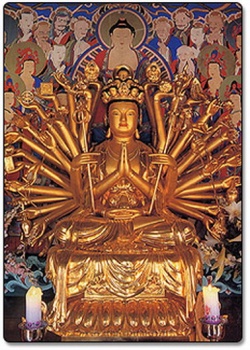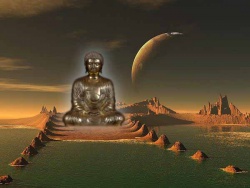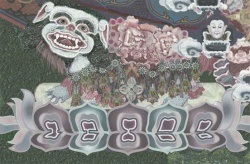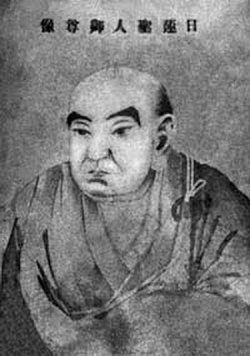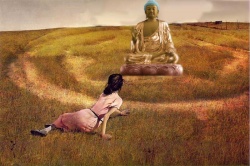The Nature and Function of Reality in Buddhism
The Nature and Function of Reality in Buddhism
Buddhist conception of reality or ontology is dynamic, focused on the process i.e. on ‘becoming’ and its locus is in the momentary nows. The Four Noble Truths indicate the universal nature of suffering and the way out of it. This universality establishes the fact that the nature of suffering and the cessation of suffering take place in the reality of existence.
In both, the ontological status has remained relatively stable throughout the process. Consistent with this understanding and, expanding on it, Buddha stated ”Whatever is of the nature of arising, all that is of the nature of cessation”.
This statement reveals one of the great philosophic insights.
The term ‘all’ refers to the dhammas (dharmas), the factors of existence/experience, which manifest themselves in the momentary existence. But the same passage goes on to say that there arose the “dustless, stainless vision of the dhamma.”(9) T
he factors of existence are now seen from the enlightened standpoint.
Both the unenlightened and enlightened natures belong to the momentary existence. The arising and cessation of dhammas are two aspects of the dynamics of the moments as they are relative to the state of suffering and the state of release.
Arising has to do with the compounding (sa^nkhaara) or grasping (upaadaana) nature of the dhammas and cessation with the non-compounding and non-grasping phenomena.
There is parity of existence and this can be labelled the ontological parity for it is centered on momentary existence, whether in the enlightened or unenlightened sense.
The fact that the same term dhamma can be seen from two different perspectives means that Buddhist reality is not separated or alienated from our common experiences.
On the one hand, common experience functions with the pluralistic dhammas, which are by their very grasped nature are already stained or tainted.
On the other hand, that selfsame realm of common experience could function without the pluralistic dhammas or could be envisioned as dustless, stainless dhammas, the singular unified nature of existence.
It means that our ordinary sa.msaaric life, as tangled as it is, has all the necessary ingredients for the transformation into the inordinate nirvaa.nic life. This spells out the saving truth of mundane existence and so the Udaana, in a very cryptic way, summed it up as follows:
”There is, O Bhikkhus, an unborn, unoriginated, uncreated, unformed. Were there not, O Bhikkhus, this unborn, unoriginated, uncreated, unformed, there would be no escape from the world of the born, originated, created, formed.(10)”
The passage clearly indicates that there is a way out of the normal conditioned or compounded realm of existence (sa.msaara) because of the functioning parity principle that is intrinsic to momentary existence.
The unborn, unoriginated, and so forth is not somewhere aloof or transcendental of the born, originated, and so forth but constitutes the pure realm realizable when the compounding elements are no longer in force. With this concept of the ontological parity of existence in place, the nature of momentary existence may be explored further.
After repeatedly asserting the impermanent nature of things i.e. reference to the five skandhas, Buddha launched into a series of fundamental doctrines. One of the finest philosophical expressions made by the Buddha reads:
”On two things, Kaccaana, does this world generally base its view, on existence and on non-existence.
Now he who with right insight sees the arising of the world as it really is, does not believe in the non-existence of the world.
But, Kaccaana, he who with right insight sees the ceasing of the world as it really is, does not believe in the existence of the world.’l(11)
The passage is clearly focused on the dynamics of momentary existence.
Enlightened, Buddha very well knew that conventional understanding works in devious and dichotomous ways, that is, the extremes of existence (bhava) and nonexistence (abhava), two terms earlier seen on the thirsts of life (ta.nhaa).
Within the context of the impermanent nature of things, he saw that these dichotomous terms are the most dominant extremes that human beings are attached to and that, thus conditioned, they are not able to intimate with their own momentary existence.
He also saw that without proper vision, the dichotomy will remain and that from this basic dichotomy other dichotomies will arise.
Here he revealed what right insight will do. If one envisions the arising of the world i.e. the rising of a moment, as it really is, then one will not fall into nihilistic tendencies or understanding.
On the other hand, if one envisions the ceasing of the world i.e. the ceasing of a moment, as it really is then one will not fall into materialistic or substantive understanding. ‘To envision the world as it really is’ precisely describes the relational dynamics involved in the momentary nature of life, that is, experiencing in a natural mode.
In failing to realize that mode, the dichotomous nature swiftly takes over and overwhelms the experiencer but despite the snares of dichotomy, the ontological parity remains nascent and shows a way which is made possible by meditative discipline. The Buddha went further to clarify the first part, thus:
”He who does not go after, does not grasp at, does not take his stand on this system-grasping, this dogma, this mental bias, such an one does not say ‘it is my soul (self, attaa).’
He who thinks, ‘that which arises is but ill (suffering, dukkha), that which ceases, it is ill,’ such an one has no doubts, no perplexity. In this matter, knowledge not borrowed from others comes to him. Thus far, Kaccana, goes right view.(12)”
Buddha points out that in our ordinary views on life and the world, we are prejudiced by ‘dogmas’ and ‘mental biases’ such that we are no longer able to view our existential flow correctly.
Thus, we must forsake any metaphysical conceptions, such as the self. Clearly, the right view (sammaa-di.t.thi) expounded by the Buddha is not a mere intellectual alignment, but a truly existential transformation of the primary order.
Budhha ends the passage with a series of most profound statements:
“‘All exists’, Kaccaana, that is one extreme. ‘Nought exists,’ Kaccaana, that is the other extreme. Not approaching either extreme, Kaccana, the Tathaagata (Buddha) teaches you a doctrine by the middle way:
‘Conditioned by ignorance comes the activities: conditioned by the activities comes consciousness, and so forth.’ Thus is the arising of this whole mass of ill (suffering).
By the utter fading away and ceasing of ignorance comes the ceasing of the activities, and so forth. Thus is the ceasing of this entire mass of ill.”(13)
By not approaching the two extremes of existence and non-existence, Buddha now introduces the doctrine of the middle way (majjhimaapa.tipadaa). And this doctrine is another way of expressing the famous doctrine of dependent origination (pa.ticcasamuppaada).
Here a virtual identity of the two doctrines may be noted. Naagaarjuna (150-250 A. D.)later makes the same equation except that he interposes the concept of emptiness (suunyataa).
The foundation suutra that sets in motion the Wheel of Dhamma (Dhammacakkappavattana Sutta), popularly known as the First Sermon, identifies the middle way with the Eightfold Noble Path of right view, right thought, right speech, right action, right living, right effort, right mindfulness, right concentration.
It also says that the middle way gives vision and knowledge thus, leads to calm, insight, enlightenment, and finally Nibbaana (Nirvaa.na).
The identity of the middle way and the Eightfold Noble Path is plausible and acceptable in light of the previous passage on the right view, which constitutes the first step of the path.
The right view is the initial and primary corrective measure in which it is necessary for the devotee to engage himself so as to proceed with the rest of the steps in the path ending in right concentration (sammaasamaadhi).
The much neglected middle way is a unique doctrine in Buddhism found nowhere else in either the East or the West.
It has nothing to do with the workings of the rational or logical mind, that is, the logical entities with which we carry out logical functions. It is not subject to mensuration or calculation, nor is it subject to a moderating process a la Aristotle or by common sense.
It is rather a truly dynamic doctrine delineating the supreme momentary nature of things. It denies all functions of contingent matters or factors of experience.
It avoids these elements or factors in order to issue forth the underlying pure, untainted nature of momentariness.
If anything, it underlies without involving itself with those elements or factors. However, this should not be construed to mean that the middle way is a receptacle of being or a catchall doctrine.
It still remains a strong guiding principle, indescribable by means of contingent elements, and functions like a border guard who checks for contraband but permits the normal flow of traffic. In brief, the middle way is another means of exhibiting things (moments) as they really are.
The dependent origination also depicts Buddhist reality is seen in the following assertion by the Buddha:
”Who sees Conditioned Genesis (pa.ticca-samuppaada) sees Dhamma; who sees Dhamma sees Conditioned Genesis.”(14)
Foremost amongst several implications of this passage is the identity of the Dhamma and conditioned genesis or dependent origination but the identity holds true only from the enlightened realm. Another implication is that conditioned genesis has two facets, the nonempirical (enlightened) and empirical (unenlightened).
A further implication is that the two facets are possible and function together because of the ontological parity of existence. Moreover, the parity is assumed in the movement from the empirically oriented dependent origination to the Dhamma.
In many respects, empirical dependent origination depicts the rise and fall of experiential events and provides the vital link to the realm of Dhamma. In its empirical mode, the pet formula for dependent origination is:
If this is, that comes to be; from the arising of this that arises; if this is not that does not come to be; from the stopping of this that is stopped.(15)
At first glance, this formula reminds the general criterion of pragmatism, that is, if certain conditions are met, then certain results will follow. The formula further reveals the subtle empirical dynamics of the rise of suffering and its cessation.
The first part of the formula refers to the incessant conditioning or compounding nature of ordinary experience. Ignorance conditions karma-formations; these condition consciousness; which then conditions mind-and-body; etc.(16)
With this series of conditionings, the existential continuum will go on forever, that is, the sa.msaara or the wheel of life.
The Buddhist naturally seeks to resolve the situation but, once again, the reality of suffering is the ground for an ontological shift, that is, from the rise of sa.msaaric conditions to the cessation thereof.
Thus, the second part of the formula precisely describes this shift. From the stopping of ignorance is the stopping of the karma-formations, then the stopping of consciousness and then the stopping of mind-and-body; etc. in series from one another(17)
The suutras rarely elaborate on the specifics of this aspect of cessation.
In the Sa.myutta-nikaaya,(18), for example, it says that the Eightfold Noble Path is the course leading to the stopping of karma formations. Right view, the first of the path, is a most profound insight into reality but a tortuous path to take up, much less to understand. Naturally, meditative discipline is prescribed to remove the initial ignorance, the hindrances, and the graspings.
The twelve-linked dependent origination has a clockwise flow (anuloma) from ignorance (avijjaa) to aging-death (jaraa-mara.na) and a counter-clockwise flow (pa.tiloma) from aging-death to ignorance.
This is another instance of the dimensional nature inherent in momentary existence that depicts the rise and cessation of suffering.
We go back necessarily to momentary existence and the uniqueness of each moment, although there is no way to avoid the conditions (paccayas) that must be present or absent, as the case may be, in the flow of momentary existence.
The focus is still on that moment which is supremely and vitally ‘appearing’.
It is like watching a spot in the ocean where a wave appears and disappears but only to be ‘replaced’ by another wave, ad infinitum.
There is another important dimension in momentary existence.
The linking phenomena of dependent origination are linked in serial order, each condition is contiguous to the next and each condition is involved with the immediate past and present in a mutually penetrative sense.
In this way, the flow of momentary existence is not limited to a serial order (merely seriatim), but proceeds in a rhythmic asymmetric-symmetric flow, where the present happenings have a backward thrust (asymmetric penetration) before appearing as a present moment.
The range of Buddhist reality is seen clearly in these microscopic present happenings.
Thus, the concept of dependent origination, by its very compounding nature, shows the asymmetric (dependent) nature as well as the symmetric (origination) nature.
This novel asymmetric-symmetric relationship is known only within the framework of the empirical nature of things, the sa.msaaric realm.
The dependent origination in the empirical sense forces the continuity of the process of suffering.
This is the wrong path(19) and must be stopped. In the empirical realm, things are going on in truncated ways and only glimpses of the total happenings are available.
Only the rim, axle, and spokes of the wheel are seen but not the full function of the wheel itself. Something seems to be missing or lacking in the dynamics.
A revealing statement on the fullness of being is found in the Discourse on Complete Purity for Alms-Gathering.
The conversation between the Buddha and Saariputta runs:
”Your faculties are very bright, Saariputta, your complexion very pure, very clear. In which abiding are you, Sariputta, now abiding in the fulness thereof? Abiding in (the concept of) emptiness do I, revered sir, now abide in the fulness thereof.
It is good, Saariputta it is good. You, Saariputta, are now indeed abiding in fulness in the abiding of great men.
For this is the abiding of great men, Saariputta, that is to say (the concept of) emptiness.”(20)
The concept of emptiness (su~n~nataa) adds a new dimension to Buddhist reality.
It has revealed at once
(a) the limited nature of empirical functions, that is, empirical dependent origination and
(b) the way out to the unlimited realm in which the dependent origination can resolve itself.
Simply put, the self, mind, chariot, wheels, and so forth are more than their respective constituent parts.
They come alive as they are in reality, but their imposed natures have made them into static entities, metaphysically and ontologically speaking.
Buddhaghosa, the great Theravaada interpreter, gave an authoritative account of this situation when he brought back a verse depicting the wheel of becoming.
Becoming’s wheel reveals no known beginning; No maker, no experiencer there;
Void with a twelvefold voidness, and nowhere It ever halts; forever it is spinning.(21)
His interpretation was made in the fifth century A.D., but the idea of voidness goes back to the earliest period and may even have filtered back from Mahaayaana developments.
Naagaarjuna (150-250 A.D.) had been [[gi
ving]] final touches to the elusive concept of momentary existence prior to Buddhaghosa in the Mahaayaana tradition.
He had been exposed to the ideas found in the early Mahaayaana suutras, such as the Praj~naapaaramitaa,
Avata^msaka, Saddharmapu.n.dariika and Vimalakiirti suutras and his great work,
Verses on the Fundamental Middle Doctrine (Muulamadhyamakakaarikaa, hereafter Kaarikaa), is actually a philosophic confirmation of the dynamics of dependent origination as the locus of Buddhist reality.
In order to establish this, he had to discuss matters from the standpoint of the middle way, hence the namesake in the title of the work (madhyamaka), to involve (a) the most inclusive view of reality and
(b) the most systematic denial (prasa^nga) of self-existent nature (svabhaava).
By reference to the famous Kaatyaayanaavavaada (Karccaayanagotta Sutta), which is foundational to the understanding of the Middle Way concept, the basic idea on the radical ontology and methodology is kept intact.
In his analysis, Naagaarjuna utilizes the concept of emptiness (`suunyataa) to clarify both the epistemological and metaphysical traps into which ordinary beings are prone to fall giving the concept a distinctive ubiquitous quality.
Epistemologically, emptiness keeps at bay any attempt to impose a self-nature or self-existent nature on any externally existing entity or on its image or impression derived thereof in the mind.
In this sense, it signifies the function of epistemic nullity. Metaphysically, emptiness disallows any reference to being or nonbeing, or a combination of both.
It also disallows any causal order or relationship applied to momentary existence because that would sunder the process in dichotomous ways and thereby strain or distort the dynamics of dependent origination.
Naagaarjuna in first chapter of the Kaarika analysed the inanity of causal or relational condition(pratyayas) in terms of establishing the nature of the dependent origination dynamics.
It turned the causal conditions themselves against the position inherently subscribing to the concepts of being (sat, bhaava) and non-being (asat, abhaava).
The doctrine of momentariness became an issue with the Abhidharma systems because of the element of justifying temporal dimensions in existence i.e. explaining the continuity of the moments of existence.
On this matter, the Sarvaastivaada seems to rely on the persistence of factors (dharmas) to describe the moments in question.
The Sautraantika, on the other hand, tried to sneak in a specious self (pudgula) to act as an ‘overlord’ of the momentary process.
Naagaarjuna sensing the pitfalls of these systems pointed out the inner contradictions that would invariably sink them deeper into the conundrum of existence.
He was intensely interested in justifying the present dynamics of momentary existence as expressed in the doctrine of dependent origination.
Opponents, including the average intellect do not understand the microscopic process of these dynamics because of the understanding framed within a network of huge chunks of temporal and spatial dimensions.
Like Buddha, he also saw that the dynamics reveal more than what is seen in ordinary perception.
In this, he was not introducing an entirely new conception of things for he went right back to the fundamental Buddhist doctrines to analyze in a truly philosophic maner the pregnant dynamics of dependent origination. They are said too be ‘pregnant’ in the sense that
(a) they do not focus on a finished product or effect (phala). which would invariably reduce to the hypostatization of an inherent self-nature in the process, but rather
(b) they focus on the very making of the product or effect, the very fiber of dependent orgination.
Yet that product or effect in question is not cognized until consciousness of the conditionality (pratiityasamutpanna) of the event itself i.e. ex post facto understanding.
It is perceiving the nature of a conditionality that describes the transpired event.
It is understanding the mode of existence of an event in the immediately transpired past tied to the present becoming.
Backward dependence as normal perception and immediate memory revealing the presence of events in the rapidity of becomingnessprovide an understanding of events by metaphysical descriptions.
The crucial point, however, is that an event is always transpiring in the immediacy, in this present momentary existence and that at that point all descriptions are mute.
In this situation, the reality of an event cannot be in the past, howsoever immediate in time it is but it must reside in the present dynamics.
It is here that the ‘pregnancy’ of the event takes on an important meaning.(22)
To elaborate on the ‘pregnancy’ of an event, revisit to the concept of asymmetric dimension is needed.
How the asymmetric relationship occurs is a large problem.
Though it is difficult to discuss the borders between symmetric and asymmetric natures yet our common understanding seems to suggest their function.
To define or describe the momentary becoming with the symmetric and asymmetric dimensions in mind is clearly to attempt another tortuous trip down the dichotomy lane, a blatant contradiction of the middle way.
Further, the meditative discipline should clear away the webs of our inherent dichotomous understanding of things.
It is only the middle way that avoids the poles of dichotomy and at once affirms the reality of the rise and cessation of current becomings.
The four relational conditions (namely, hetu-pratyaya, aalambana-pratyaya, anantara-pratyaya, adhipateya-pratyaya) are neat ties that cement the elements (svabhaava natures) in the dynamics but on the other hand, they impede rather than foster the current becomings.
Thus, Naagaarjuna denied their function in the dynamics of becoming.
The famous Eight Noes or Negations (namely, non-extinction, non-origination, non-destruction, non-permanence, non-identity, non-differentiation, non-coming into being,
and non-going out of being) are asserted to hold in check any misunderstanding based on the reification of sense impressions or the reification of reification, as the case may implicate itself to be.
Buddhist reality, in brief, is much too dynamic to stay in view in a certain holding pattern (upaadaana effect) and to establish its identity at any time or in any manner.
Self-identity is no identity in the becomingness of things.
Naagaarjuna answered to the symmetric-asymmetric dimensionality by reaffirming the concept of emptiness in order to ‘cross the borders’ of the alleged dimensions. Like the middle way, emptiness avoids the dichotomy and at once affirms the rise and cessation of current becomings.
Emptiness is said to be a provisional concept (praj~napti) pointing at the middle way.(23)
It expresses the dynamic open ontological process that has no truck with epistemic and metaphysical entities.
It opens up both sides of the borders and in terms of emptying the factors (dharmas) of the wheel of becoming (dependent origination), it serves to identify the realms of sa.msaara and nirvaa.na.
As Naagaarjuna says, emptiness should not be falsely grasped, for it is in reality that which makes momentary becoming possible and without it, momentary becoming would be meaningless and without vitality.(24)
The concept of emptiness, to be sure, was central in praj~naapaaramitaa suutras and other Mahaayaanistic works.
The Diamnnd Suutra and Heart Suutra present a capsuled accounting of the identity of the five skandhas and emptiness and vice versa.(25) being the clearest expressions of the ontological parity of experiential reality seen in Buddhist literature.
In reality, it is not only an expression but a guide and goal in meditative discipline.
From the corporeal nature to the conscious realm, the empty nature is basic and confirmed in the dynamics of dependent origination. Being an heir to this tradition, Naagaarjuna simply incorporated the emptiness idea into his own analysis of the fundamental concept of dependent origination, bringing into play rare insight into the dynamics, and thereby he set a high-water mark in Buddhist philosophical understanding.
NOTES:
9. Majjhima-nikaaya, 3.280; see The Middle Length Sayings, trans. I. B. Horner (London: Luzac & Co., 1959) vol. 3, p. 330. See also Kindred Sayings, vol. 4, p. 66.
10. The Udaana (The Solemn Utterances of the Buddha), trans. D. M. Strong (London: Luzac & Co., 1902), p. 112. 11. Kindred Sayings, vol. 3, pp. 113-114.
12. Ibid., p. 114.
13. Ibid.
14. Edward Conze, ed., Buddhist Texts Though the Ages, trans. by I. B. Horner (New York: Philosophical Library, 1954), p. 65. 15. Ibid., p.66.
16. Ibid., The twelve links of dependent origination are: ignorance, karma-formation, consciousness corporeality-mentality, six bases of sense, impression feeling, craving, clinging or attachment, becoming, rebirth, and aging-death. Treatment of dependent origination by Buddhaghosa, Visuddhimagga (The Path of Purification), translated by Bhikkhu ~Naanamoli (Colombo. Ceylon: R. Semage, 1956, XVII, pp. 592-678.
17. Edward Conze, ed., Buddhist Texts Through the Ages, pp. 66–67.
18. Sa.myutta-nikaaya, 2.42-43, Kindred Sayings, vol.2, p. 33.
19. Buddhaghosa, Visuddhimagga, p. 593.
20. Majjhima-nikaaya, 3.294; The Middle Length Sayings, vol. 3, p.343.
21. Buddhaghosa, Visuddhimagga, p. 666. Abiding in the concept of emptiness is also the main theme in two short texts, Lesser Discourse on Emptiness (Cu.lasu~n~nataa Sutta and Greater Discourse on Emptiness (Mahaasu~n~nataa Sutta), in Majjhima-nikaaya, 3.121, 122; see The Middle Length Sayings, vol. 3. pp. 147-162.
22. In the pragmatic tradition, George H. Mead emphasized the preparatory and anticipatory stages of the act, a great insight in expanding on the dimensions of the pragmatic act, although it may
be problematic when applying the pragmatic criteria to Buddhist momentary existence. The dimensions may not coincide on all points. 23. Muulamadhyamakakaarikaa, XXIV. 18
24. Ibid., XXIV. 11, 14.
25. Edward Conze, trans., Buddhist Wisdom Books (London: George Alien & Unwin Ltd., 1958).




